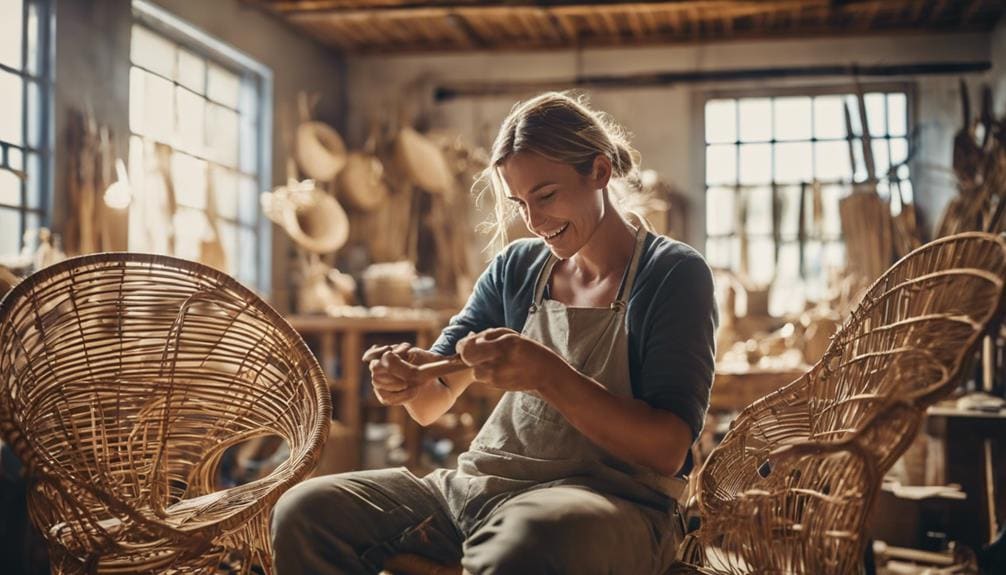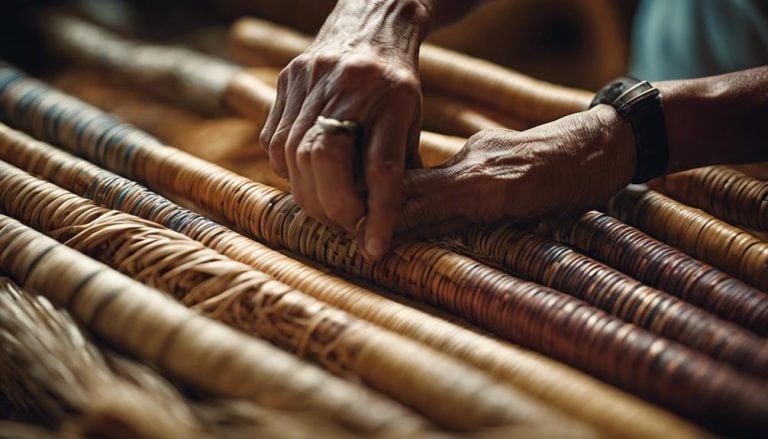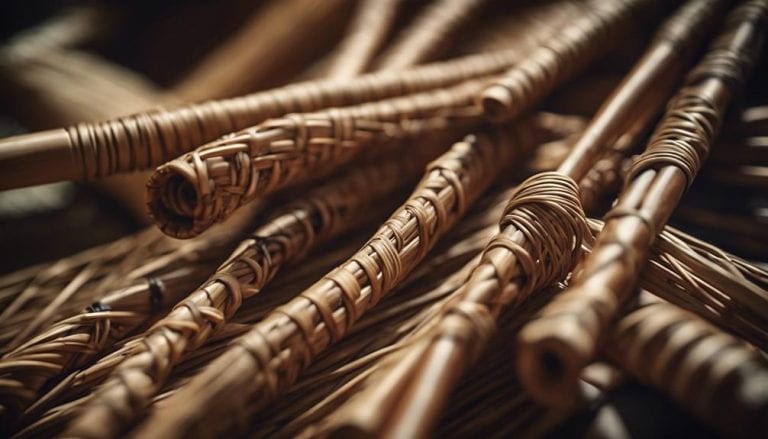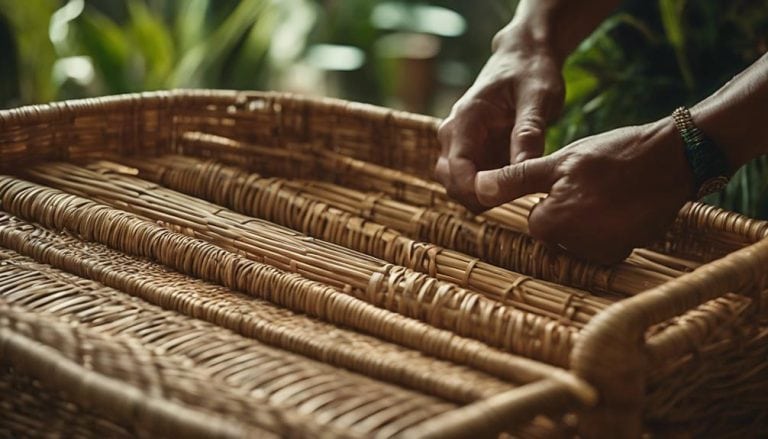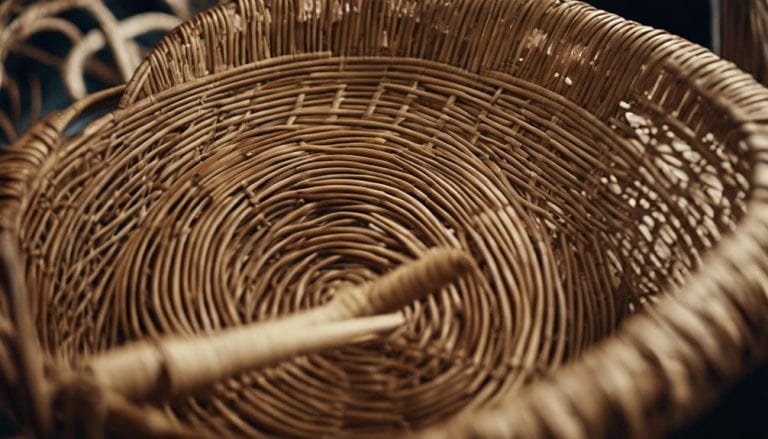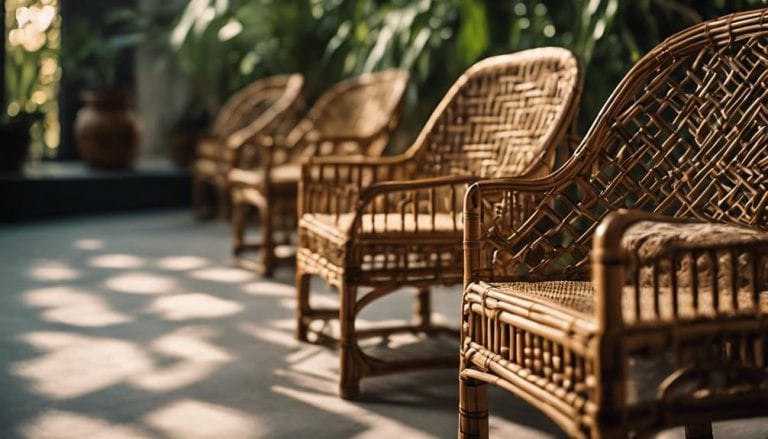Pros and Cons of Rattan Cane Weaving
Exploring the world of rattan cane weaving is like opening Pandora’s box of design possibilities and challenges. As a writer deeply immersed in the intricacies of furniture craftsmanship, I’ve found that while rattan cane’s lightweight and sustainable nature offers fresh air in eco-conscious decor, its vulnerability to moisture and the need for regular upkeep cannot be overlooked.
But don’t just take my word for it; join me as we peel back the layers to uncover the nuanced balance between its aesthetic appeal and practical drawbacks, considering whether its benefits truly outweigh the cons.
Rattan cane weaving has both advantages and disadvantages. On the positive side, it’s a sustainable and eco-friendly craft using natural materials. However, it can be time-consuming and requires skill, which may limit its appeal for some.
Key Takeaways
- Rattan cane weaving offers unmatched versatility and durability, fitting various design styles and lasting up to 30 years.
- It supports environmental sustainability, regenerating rapidly with minimal production impact and supporting local economies.
- Maintenance requires regular cleaning and protection from harsh elements to preserve its beauty and functionality.
- While offering value for money through its longevity and craftsmanship, costs can vary significantly based on design complexity.
Aesthetic Appeal
With its intricate patterns and natural charm, Rattan cane weaving effortlessly enhances the aesthetic appeal of furniture and decor, blending seamlessly across various design styles. As someone deeply immersed in the design world, I’ve come to appreciate the unmatched design versatility and visual impact that rattan cane brings. It’s not just about the material; it’s about the story it tells through its texture variety and how it integrates into style with grace and ease.
The beauty of rattan cane weaving lies in its ability to adapt. Whether it’s the heart of a bohemian oasis or the highlight in a minimalist, modern setting, its texture variety speaks volumes. I’ve watched spaces transform with the inclusion of a single rattan piece, its airy look making rooms feel more open and inviting. This isn’t just craftsmanship; it’s artistry.
Integrating rattan into decor isn’t just about following a trend. It’s about acknowledging and respecting the skill that goes into each weave, the attention to detail that brings each piece to life. It’s a testament to style integration, where traditional meets contemporary and where every texture tells a unique story.
Durability and Strength

Beyond its visual allure, I’ve found that the exceptional durability and strength of rattan cane weaving stand the test of time, often lasting up to three decades with the right care. This isn’t just an assumption; it’s a testament to the craft that has adorned my living spaces, providing beauty and reliability.
Here’s why rattan cane weaving captures hearts:
- Flexibility Benefits: Rattan’s natural flexibility allows it to bend slightly under pressure without breaking. This unique characteristic ensures that pieces can withstand daily use while maintaining their original form.
- Longevity Advantages: Rattan furniture can extend up to 30 years, a remarkable feature that speaks to its enduring appeal and practicality.
- Structural Integrity: Thanks to its tight weaving patterns, rattan furniture holds its shape and strength over the years, resisting the wear and tear that often diminishes the value of other materials.
- Sturdy Support: Rattan cane’s inherent strength makes it ideal for crafting furniture that must bear weight, ensuring safety and stability.
In my experience, embracing rattan cane weaving brings an artistic touch to space and a promise of longevity and robustness that few other materials can match.
Environmental Impact
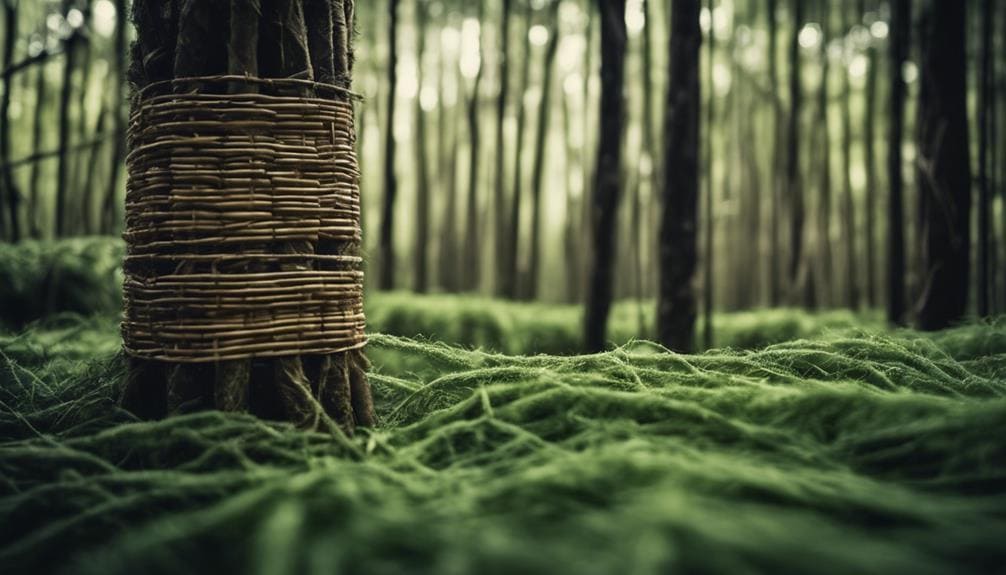
While appreciating the durability and aesthetic appeal of rattan cane weaving, it’s also crucial to consider its environmental footprint. As someone deeply immersed in the artistry of crafting, I’ve come to understand the profound connection between our creations and the earth that yields them. Rattan’s rapid regeneration cycle of 5 to 7 years is a testament to nature’s resilience and generosity. This swift growth contributes to reduced waste, presenting a sustainable furniture-making option.
Delving deeper, the choice of rattan cane weaving aligns with a dedication to biodiversity conservation. By opting for sustainably sourced materials, we’re not just crafting but participating in an eco-friendly movement that honors the earth. The low environmental impact of rattan furniture, stemming from its natural, pollution-minimizing nature, echoes my commitment to practices that nurture rather than deplete.
Supporting rattan cane weaving means championing a method that significantly lowers our carbon footprint in furniture manufacturing. It’s a choice that marries aesthetic allure with the imperative of environmental stewardship, ensuring that our artistic expressions contribute positively to the world’s ecological balance.
Maintenance Requirements
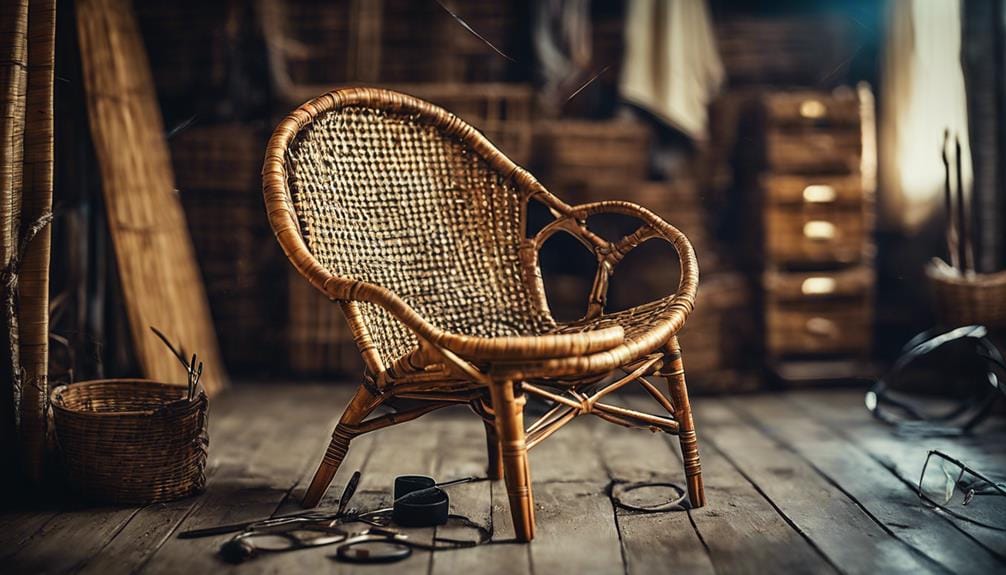
To ensure the lasting beauty and functionality of your woven treasures, embracing a routine of careful maintenance is essential. The tactile nature of rattan cane weaving, with its intricate patterns and warm undertones, requires a nuanced approach to keep it in pristine condition.
Here, I’ll share the intimate practices that have allowed me to preserve the allure of my collection.
- Regular Dusting and Wiping: Gently dry your rattan furniture with a damp cloth. This simple act maintains its cleanliness and prevents the accumulation of grime that can mar its appearance over time.
- Deep Cleaning: Occasionally, employ wood soap or a mild detergent for a more thorough cleaning. This technique delicately removes tougher stains without compromising the cane’s integrity.
- Protection from Elements: Shield your pieces from direct sunlight and rain. This precaution safeguards the rattan from damage, ensuring its long-term care and preservation.
- Consider Synthetic Options for Outdoors: For garden or patio use, opting for resin or synthetic wicker furniture can enhance longevity, offering a practical solution without sacrificing aesthetic appeal.
Cost Considerations
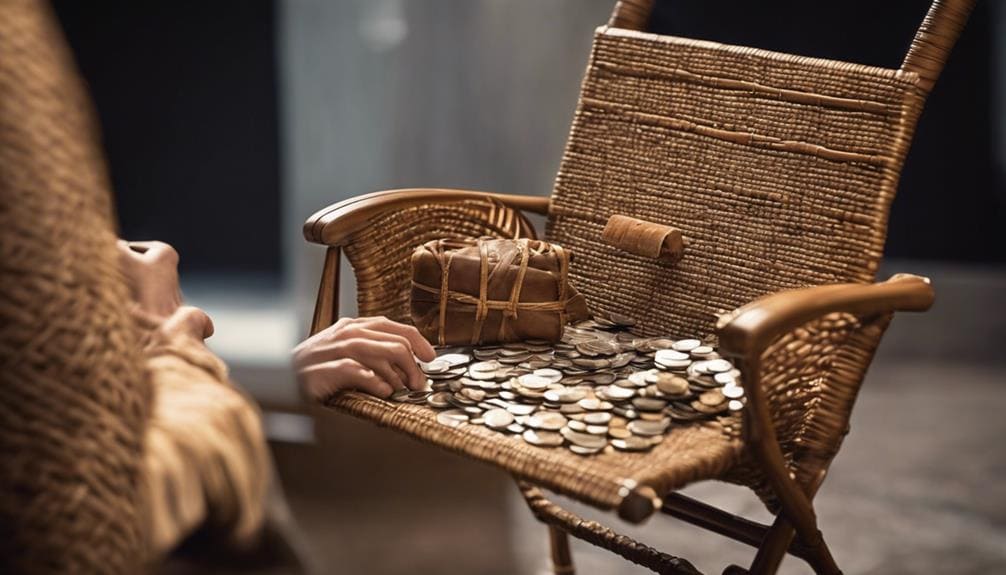
Having explored the nuances of maintaining rattan cane weaving to ensure its lasting beauty, let’s now consider the financial aspect of incorporating this artful furniture into our homes. The cost of rattan cane weaving pieces varies widely, influenced by the intricacy of their design and the craftsmanship involved. While not as pricey as furniture crafted from high-end materials, rattan pieces offer an understated elegance that belies their moderate price tag.
Customization options play a significant role in the pricing structure. Opting for a piece tailored to your specific tastes and requirements might nudge the price upwards compared to mass-produced items. Yet, the allure of having a unique piece often outweighs the additional cost. Moreover, adding personal touches like upholstery, cushions, or specialized finishes can further elevate the price and the furniture’s comfort and aesthetic appeal.
Despite these potential add-ons, rattan cane weaving remains a budget-friendly choice for those looking to imbue their spaces with warmth and craftsmanship. Investing in a high-quality piece enhances the decor and ensures longevity and durability, making it a wise financial decision in the long run.
Versatility in Use

Rattan cane’s versatility shines in its ability to be transformed into a myriad of items, from elegant furniture to intricate decorative pieces, reflecting a rich tradition of craftsmanship. I’ve worked with rattan cane for years, and its adaptability never ceases to amaze me.
Here’s why it captivates me:
- Furniture Making: Rattan cane lends itself to crafting gorgeous, durable furniture that stands the test of time. Its flexibility allows for creating both traditional and modern designs, making it a favorite in my workshop.
- Decorative Items: The ability to weave intricate designs means I can produce unique custom creations. Each piece tells a story, a testament to the artisan’s skill and creativity.
- Baskets and Mats: These useful items become art when crafted from a rattan cane. Their beauty lies in the details, the intricate patterns woven into each piece.
- Combining Materials: Incorporating materials like metal, glass, and plastic elevates the aesthetic of rattan cane creations. It’s a harmonious blend that enhances both function and form.
In my hands, rattan cane transforms into custom creations that bear the mark of intricate designs and a deep appreciation for this versatile material.
Frequently Asked Questions
What Are the Benefits of Rattan Cane?
Rattan cane’s eco-friendliness is unmatched; it’s like embracing nature in your living space. Its durability surprises many, enduring years of use while maintaining its artistic charm, making it a deeply personal choice for me.
What Are the Disadvantages of Rattan Furniture?
Rattan furniture’s charm often fades under the harsh sun, revealing its weather sensitivity and the inevitable maintenance challenges. I’ve learned it requires constant care, tightening its weave and shielding it from discoloration and damage.
Which Is Better, Cane or Rattan?
I’d say cane edges out rattan, focusing on sustainability and material durability. It’s not just about the art of weaving; it’s the intimate feel, the lasting embrace of a chair that matters.
What Are the Pros and Cons of Cane Furniture?
I’ve found cane furniture to be a charming mix of sustainability trends and artistic flair. It demands regular maintenance to avoid mold, but with the right care tips, it remains a cozy, intimate choice for many.
Conclusion
Navigating the world of rattan cane weaving is much like tending a delicate garden; it demands attention, care, and a touch of love. Despite its fragility against moisture and the need for constant upkeep, its lightweight grace and eco-sympathetic charm are undeniable. I once saw a rattan chair, weathered yet standing proud, a testament to its durability when tended with care. It’s a dance of balance—embracing its artistic allure and environmental kindness while mindful of its tender nature.

